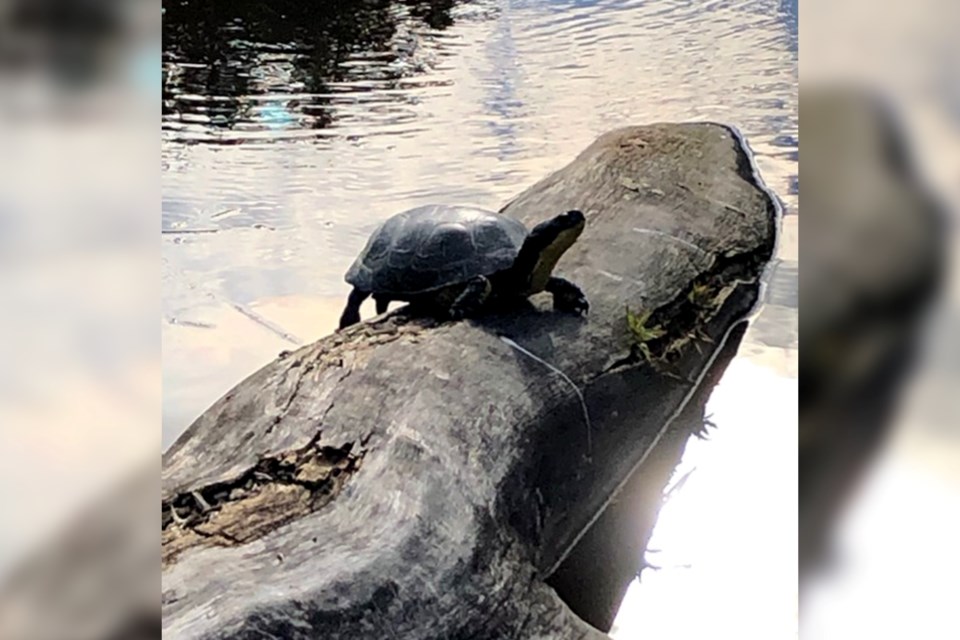With the ice having finally left the ponds and wetlands in the Laurentian University greenspace, it’s not uncommon to see turtles sunning on a log, and to see people observing the turtles, fascinated by these reclusive reptiles.
Where have the turtles been all winter? And what are they up to now?
To find out, I contacted Dr. Jackie Litzgus, a professor in the School of Natural Sciences at Laurentian University. Dr. Litzgus described the following:
“Turtles hibernate at the bottom of permanent water bodies from late October until the end of April. When turtles hibernate, they rely on stored energy and uptake oxygen from the pond water by moving it across body surfaces that are flush with blood vessels. In this way, they can get enough oxygen to support their minimal needs without using their lungs. Turtles have one area that is especially well-vascularized — their butts.”
“Once spring arrives, the turtles emerge from hibernation and can wander hundreds of metres, especially when they are searching for mates or traveling to nesting sites. Females nest in open sunny habitats such as forest clearings, sandy shorelines, gravel road shoulders, and rock outcrops.”
The LU Greenspace is remarkable in that it is home to three species of turtles, all of which are listed as species at risk by the Committee on the Status of Endangered Wildlife in Canada (COSEWIC).
COSEWIC lists the Midland painted and snapping turtles as being of ‘special concern’, and the Blanding’s turtle as endangered. It can take female turtles up to 20 years to mature and produce their first clutch of eggs.
Individuals of these long-lived species can survive in the wild for more than 75 years. Some LU greenspace turtles may have endured the acidification then remediation of their homes. They are resilient, but only if they have intact natural habitats.
Just as Sudbury residents have been voicing their support for an intact LU greenspace so they can thrive, the turtles, who have no voice, also need an intact LU greenspace so they can survive.
Mandy Hey lives in Greater Sudbury.
